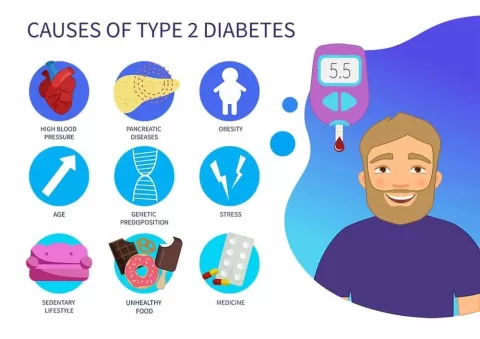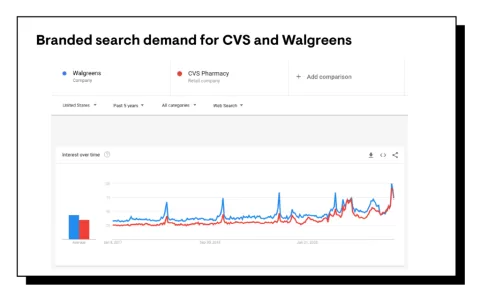Dry mouth treatment is a critical area of research, especially for individuals suffering from conditions like Sjögren’s syndrome. This autoimmune disease causes significant discomfort due to reduced saliva production, leading to a range of difficulties from speaking to swallowing. Recent breakthroughs have identified the loss of the tricellulin protein in salivary glands as a major contributor to this condition, unveiling new possibilities for targeted therapies. Rather than merely managing symptoms, innovative treatments aim to restore saliva flow by repairing the damage at the cellular level. As scientists explore these advances, patients may soon find relief from dry mouth remedies that address the root causes of their discomfort.
The quest for effective dry mouth relief often extends beyond mere symptom alleviation, especially for those facing chronic conditions that impact the salivary glands. People with persistent oral dryness may seek various options, many of which target the dysfunction of moisture-producing glands. Identifying and addressing the underlying issues, such as the loss of proteins responsible for cell integrity, shifts the focus from temporary solutions to lasting repairs. This holistic approach not only helps manage the discomfort associated with dry mouth but also opens the door for revolutionary treatments that can fundamentally restore normal gland function. By understanding the biological mechanisms at play, such as those found in autoimmune diseases like Sjögren’s syndrome, researchers are paving the way for exciting new therapies.
Understanding Sjögren’s Syndrome: The Impact on Daily Life
Sjögren’s syndrome is a chronic autoimmune disorder that primarily affects the body’s moisture-producing glands, leading to symptoms such as dry mouth and dry eyes. This condition predominantly impacts women and can severely hinder daily activities like speaking, eating, and even sleeping. The relentless nature of Sjögren’s results from an immune system attack on the salivary and lacrimal glands, causing a significant decrease in fluid production. As a result, individuals may experience discomfort and a diminished quality of life, as the dryness can lead to difficulties in swallowing or increased dental problems due to reduced saliva.
The emotional and psychological toll associated with managing a chronic condition like Sjögren’s syndrome is substantial. Patients often report feelings of frustration and isolation, as their symptoms can be invisible to others. The direct impact of these symptoms can lead to social withdrawal, anxiety, and depression, exacerbating the already significant health challenges. This highlights the importance of understanding Sjögren’s syndrome not just as a physical affliction, but as a condition that affects mental health and social interactions as well.
The Role of Tricellulin in Salivary Gland Function
Tricellulin is a critical protein found in the salivary glands that plays a vital role in maintaining the integrity of cell junctions. It serves as a gatekeeper for the three-way junctions between epithelial cells, ensuring that these critical barriers remain sealed. When tricellulin is compromised due to inflammation or autoimmune attack, the salivary glands become dysfunctional, leading to a condition known as hyposalivation. This results in a decreased ability to produce saliva, which is essential for digestion, oral hygiene, and overall comfort.
Understanding the mechanics of tricellulin loss is crucial for developing effective therapies. The recent research revealing that inflammation can trigger the breakdown of tricellulin paves the way for innovative treatment strategies. By targeting the signals that lead to the loss of this protein, researchers aim to restore normal salivary function. This approach shifts the focus from merely addressing symptoms of dry mouth to repairing the underlying cellular damages caused by conditions like Sjögren’s syndrome.
Exploring Dry Mouth Treatment Options
For individuals suffering from dry mouth, various treatment options can help alleviate symptoms while addressing the root causes. Common dry mouth remedies include the use of saliva substitutes and stimulants designed to increase saliva production. These treatments can enhance comfort and improve daily functioning for those affected by Sjögren’s syndrome. Additionally, maintaining proper hydration and avoiding dehydrating substances, such as caffeine and alcohol, can play a significant role in managing dry mouth.
Emerging therapies are also on the horizon, particularly those targeting the restoration of tricellulin in the salivary glands. Advancements in scientific research indicate potential treatments that not only alleviate symptoms but actually repair damaged tissues. Investigational therapies such as AT1001 have shown promise in reversing the damage associated with the loss of tricellulin, offering hope for effective dry mouth treatment solutions that could transform the lives of millions suffering from these debilitating symptoms.
The Science Behind Sjögren’s Syndrome
Research into Sjögren’s syndrome has revealed that the immune system plays a crucial role in its development. The disorder is characterized as an autoimmune disease, meaning the body mistakenly targets its own tissues, particularly the salivary glands and tear-producing glands. This leads to a vicious cycle in which inflammation causes further damage, exacerbating the symptoms over time. Scientists have identified specific proteins, such as tricellulin, that are essential for the proper functioning of these glands, providing insights into how we might stop or even reverse the damage.
Functional studies on Tricellulin offer a detailed view of the molecular interactions at the cellular level that contribute to Sjögren’s syndrome. By understanding these processes, researchers can identify novel therapeutic targets and develop strategies that not only mitigate symptoms but also restore gland function. This intricate relationship between immune response and glandular integrity underscores the complexities involved in treating autoimmune conditions like Sjögren’s syndrome.
Innovations in Autoimmune Disease Research
The groundbreaking research at Peking University is a testament to the rapid advancements in understanding autoimmune diseases like Sjögren’s syndrome. By identifying the critical role of tricellulin, scientists have opened new avenues for therapies that could reshape the treatment landscape. This marks a significant departure from traditional approaches that typically only manage symptoms. The new focus on repairing the actual tissue damage rather than just alleviating discomfort represents a paradigm shift in autoimmune disease research.
Innovative therapeutic strategies, including the use of microRNA inhibitors, are under exploration to offer targeted treatments for Sjögren’s syndrome. These programs could lead to breakthroughs not only for dry mouth but also for various related conditions, showcasing the potential benefits of understanding and manipulating cellular mechanisms in autoimmune responses. As research progresses, it becomes increasingly likely that patients will soon experience treatments grounded in the latest scientific discoveries.
The Future of Sjögren’s Syndrome Treatment
Looking ahead, the future of Sjögren’s syndrome treatment appears promising due to ongoing research efforts aimed at addressing the underlying causes of the disease. By focusing on restoring tricellulin and repairing damaged salivary glands, scientists are uncovering potential treatments that could fundamentally change how Sjögren’s syndrome is managed. This forward-thinking approach could lead to the development of safe, effective therapies that not only relieve symptoms but also improve the quality of life for individuals suffering from this condition.
Moreover, early detection of tricellulin loss presents a significant opportunity for preventative measures. By diagnosing and addressing the disease before irreversible damage occurs, healthcare providers could drastically improve patient outcomes. The integration of these new strategies into clinical practice could lead to a new standard of care for Sjögren’s syndrome, moving beyond symptomatic treatment to a holistic approach that empowers patients.
The Importance of Research Collaboration
Collaborative efforts among researchers, clinicians, and patients are essential for advancing our understanding and treatment of Sjögren’s syndrome. By sharing insights and data, the medical community can expedite the translation of laboratory findings into practical therapies. Innovations driven by collaboration may hasten the development of new treatment options, providing hope to millions affected by this challenging autoimmune disease.
Engaging with patient advocacy groups can also enhance research initiatives by raising awareness and funding for Sjögren’s syndrome studies. This synergistic approach invites different perspectives, fostering innovation and prioritizing research that aligns closely with patient needs. Such partnerships ultimately enhance the likelihood of translating research breakthroughs into effective therapies that can change lives.
Clinical Trials: Bridging the Gap Between Research and Patients
The transition from research findings to clinical application is a critical phase in developing effective treatments for Sjögren’s syndrome. Clinical trials serve as the bridge that connects laboratory discoveries, like those pertaining to tricellulin, with real-world therapies. These trials are essential for determining the safety and efficacy of new treatment strategies, offering patients the chance to benefit from cutting-edge advancements in medical science.
Participation in clinical trials is often a lifeline for individuals with Sjögren’s syndrome, providing them access to potential new treatments while contributing to the broader understanding of the disease. As trials continue to evolve and new treatment modalities are introduced, patients will play a crucial role in shaping the future landscape of Sjögren’s syndrome management. The collaborative spirit of clinical research offers hope for transformative therapies that could redefine how this condition is treated.
Understanding Autoimmune Disorders Beyond Sjögren’s Syndrome
The findings related to Sjögren’s syndrome and the role of proteins like tricellulin have broader implications in understanding other autoimmune diseases. Conditions such as rheumatoid arthritis, lupus, and multiple sclerosis may share similar pathophysiological mechanisms, particularly those involving immune system dysregulation and epithelial barrier dysfunction. Research focused on one autoimmune disorder can shed light on others, promoting a more integrated approach to treatment.
As scientists continue to unravel the complexities of these conditions, the potential for cross-disciplinary applications becomes evident. The same innovative therapies developed for Sjögren’s syndrome, such as targeting inflammatory pathways or repairing epithelial barriers, may benefit patients suffering from various autoimmune diseases. This interconnected research fosters a deeper understanding of our immune system and its multifaceted role in health and disease.
Frequently Asked Questions
What are the latest treatments for dry mouth related to Sjögren’s syndrome?
Recent breakthroughs have identified the loss of tricellulin, a key protein in salivary glands, as a primary cause of dry mouth in Sjögren’s syndrome. Researchers have developed treatments like AT1001 and microRNA-145 inhibitors that restore tricellulin function, potentially reversing dry mouth symptoms.
How does tricellulin deficiency contribute to dry mouth in Sjögren’s syndrome?
Tricellulin is critical for maintaining the integrity of cell junctions in salivary glands. Its deficiency, often caused by inflammation in Sjögren’s syndrome, leads to the breakdown of these junctions, resulting in reduced saliva production and dry mouth symptoms.
What strategies are being developed to repair salivary glands affected by autoimmune diseases?
Current research focuses on therapies that target tricellulin restoration in salivary glands. Investigational drugs like AT1001 and microRNA-145 blockers have shown promise in laboratory models, indicating potential for new treatments that repair gland structure rather than only managing dry mouth symptoms.
Can dry mouth remedies effectively manage symptoms of Sjögren’s syndrome?
While traditional dry mouth remedies can provide temporary relief, new treatments targeting the underlying cause, such as tricellulin loss, may offer more lasting solutions for individuals with Sjögren’s syndrome, potentially moving beyond simple symptom management.
What role does inflammation play in Sjögren’s syndrome and dry mouth symptoms?
Inflammation in Sjögren’s syndrome triggers the degradation of tricellulin in salivary glands, disrupting cell junctions responsible for saliva production. This leads to dry mouth symptoms. Effective treatments aim to reduce inflammation and restore normal gland function.
How is research on tricellulin influencing future dry mouth treatments?
Research on tricellulin has unveiled crucial mechanisms behind dry mouth in Sjögren’s syndrome. By focusing on repairing the damage caused by its loss, researchers are developing targeted therapies that could significantly improve moisture production and overall quality of life for those affected.
Are there any new clinical trials for Sjögren’s syndrome treatments focusing on dry mouth?
Yes, the promising findings regarding tricellulin have laid the groundwork for upcoming clinical trials. Treatments that restore salivary gland function, such as AT1001, are expected to enter trials soon, offering hope for more effective dry mouth treatments in Sjögren’s syndrome patients.
What lifestyle changes can help with dry mouth associated with Sjögren’s syndrome?
While waiting for new treatments, individuals can try dry mouth remedies such as staying hydrated, using saliva substitutes, avoiding caffeine and alcohol, and maintaining good oral hygiene. These measures can help alleviate symptoms until more definitive therapies become available.
How can early detection of tricellulin loss improve Sjögren’s syndrome treatment outcomes?
Identifying tricellulin loss early can enable proactive interventions that may prevent irreversible damage to salivary glands. This proactive approach could lead to better management strategies and the potential for reversing dry mouth symptoms in Sjögren’s syndrome.
What are the potential implications of tricellulin research for other conditions beyond Sjögren’s syndrome?
The discoveries surrounding tricellulin and its role in maintaining gland function could extend to other health issues involving glandular damage, such as dry eye disease and certain gastrointestinal disorders. Enhanced understanding may lead to new treatments for various conditions characterized by dry symptoms.
| Key Points | Details |
|---|---|
| Underpinning Cause | Loss of tricellulin, a protein in salivary glands, is identified as the main cause of dry mouth in Sjögren’s syndrome. |
| Research Breakthrough | Restoration of tricellulin in lab models reversed damage, proposing new avenues for treatment that repair damage instead of just managing symptoms. |
| Mechanism of Action | Inflammation compromises tricellulin, leading to increased cell permeability and decreased saliva production. |
| Strategies Tested | Two therapeutic approaches were utilized: the investigational drug AT1001 and microRNA-145 inhibitors, both successful in restoring saliva secretion in mice. |
| Future Implications | Potential for early detection of tricellulin loss and rapid clinical development of targeted therapies for Sjögren’s syndrome and other similar conditions. |
Summary
Dry mouth treatment is on the verge of a revolutionary change due to recent breakthroughs in understanding Sjögren’s syndrome. Researchers have pinpointed the loss of the protein tricellulin as the cause of this painful disorder, which can now be targeted for repair rather than mere symptom relief. This discovery opens the floodgates for innovative therapies that aim to restore function in the salivary glands, shifting the focus from traditional management of symptoms to actual structural repair. As clinical trials progress, patients can look forward to groundbreaking treatments that can significantly improve quality of life.
The content provided on this blog (e.g., symptom descriptions, health tips, or general advice) is for informational purposes only and is not a substitute for professional medical advice, diagnosis, or treatment. Always seek the guidance of your physician or other qualified healthcare provider with any questions you may have regarding a medical condition. Never disregard professional medical advice or delay seeking it because of something you have read on this website. If you believe you may have a medical emergency, call your doctor or emergency services immediately. Reliance on any information provided by this blog is solely at your own risk.







